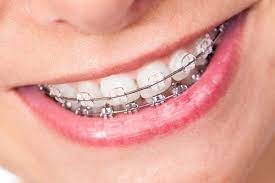Clear aligners offer a discreet and flexible option for straightening teeth. These custom-made trays are designed to shift teeth gradually without the use of wires or brackets. Many patients prefer clear aligners because they are nearly invisible, easy to remove, and comfortable to wear. Dentists often recommend them for mild to moderate crowding, spacing, or bite issues. As dental technology evolves, this approach continues to gain popularity among teens and adults seeking more subtle treatment options.
Custom Fit for Comfort
Each set of clear aligners is created using digital scans that capture the shape and position of the teeth. This process allows for a snug, customized fit that helps guide each tooth into place with minimal discomfort. The trays are smooth and lightweight, reducing irritation inside the mouth. Unlike traditional braces, they do not involve sharp edges or components that require frequent adjustments. Patients often report less soreness during treatment, especially when transitioning between trays.
Clear aligners can be removed during meals, brushing, and flossing, which helps patients maintain oral hygiene throughout treatment. This flexibility also allows individuals to continue eating a wide range of foods without the restrictions typically associated with braces. The ability to remove the aligners temporarily makes it easier to stay consistent with dental care and avoid issues like plaque buildup or tooth staining. Patients are encouraged to wear the trays for most of the day, but the option to remove them as needed supports lifestyle preferences and routines.
Gradual, Predictable Progress
Treatment with aligners follows a step-by-step process, with new trays provided every few weeks. Each set is designed to move specific teeth slightly until the desired alignment is achieved. Dentists or orthodontists monitor progress through periodic check-ins and adjust the plan as needed. Digital modeling allows patients to see their predicted outcomes before treatment begins, which helps set expectations and support motivation. The gradual nature of this process provides structure without the need for emergency visits related to broken brackets or wires.
Fewer Office Visits Required
Clear aligners typically require fewer in-person appointments than traditional braces. Because there are no wires to tighten, patients usually receive several sets of trays at once and follow a schedule for switching between them. These visits focus on monitoring progress, checking fit, and making minor adjustments if needed.
This approach is especially helpful for busy adults or those who live far from the dental office. Some practices also offer virtual check-ins for added convenience. Fewer disruptions mean that patients can stay focused on their routines while still making progress toward straighter teeth.
Discretion and Confidence
The transparent design of clear aligners allows people to undergo orthodontic treatment with minimal visibility. For working professionals, students, or individuals in social settings, this can reduce self-consciousness and help maintain confidence. Clear trays do not affect speech once the mouth adjusts, and there are no visible brackets or bands. This design also eliminates the risk of food becoming trapped in wires or causing embarrassment during meals. Many patients feel more comfortable engaging in conversation, smiling, or attending events while wearing aligners.
Properly aligned teeth are easier to clean and less prone to decay or gum disease. Clear aligners support this process by correcting crowding, bite imbalances, or overlapping that might otherwise interfere with brushing and flossing. Addressing alignment also reduces strain on the jaw and minimizes uneven wear on enamel.
Explore Clear Aligners
Aligners are often followed by a retention phase, which involves wearing a custom retainer to help teeth maintain their new position. This step supports the long-term results of treatment and reduces the risk of shifting. Patients who follow the recommended guidelines usually see lasting improvements in both appearance and function. Providers offer regular check-ins to make sure alignment remains stable and that oral hygiene continues to support the progress made. The structured yet adaptable process allows individuals to take an active role in managing their dental health from start to finish.








Leave a Reply